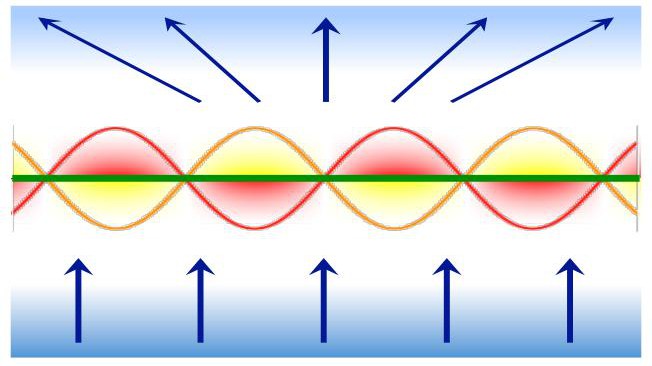Discovery of new subatomic effect could advance electron microscopes

© F. Carbone/EPFL
An international team of scientists led by EPFL has now discovered a new way of controlling electron-photon interactions that can push the capabilities of electron microscopes.
Subatomic particles behave in outlandish ways. For example, if an electron were shot at a light particle – a photon – in vacuum, we would expect them to bounce off each other like billiard balls. But in reality, the two particles wouldn’t interact because photons don’t actually have any mass. An international team of scientists led by EPFL has now discovered a new way of controlling electron-photon interactions that can advance the capabilities of electron microscopes. The work is published in Physical Review B.
The problem of an electron and a photon interacting is that the latter does not have mass. Because of this, the interaction would violate the laws of physics, because both energy and momentum cannot be conserved simultaneously. In short, this type of interaction is “forbidden”.
But in 1933, the physicists Paul Dirac and Pyotr Kapitza predicted that a way of “bouncing” electrons off photons was to add a second photon to the mix, creating something called a “standing wave” of light – a seemingly stationary wave that occurs when two photons coming from opposite directions meet. This standing wave, said Kapitza and Dirac, could deflect or diffract an electron beam in vacuum. This so-called “KD effect” was finally confirmed experimentally in 2001.
Fabrizio Carbone at EPFL and his colleagues at Spain and the US have now discovered that an entirely new type of interaction occurs when photons are replaced with quasiparticles that occur from collective oscillations of electrons. These oscillations are known “plasmons”.
In the theoretical study, the researchers show that this electron-plasmon interaction takes place through a mechanism different to that of the KD effect. Practically, it would involve combining strong plasmonic fields with lasers, and would satisfy the energy/momentum conservation rules.
The result would be electron diffraction – electrons scattering off a periodic plasmonic field. “As such, our results predict a new physical effect never observed before,” says Fabrizio Carbone, who used a similar approach to observe the particle-wave nature of light, reported in a widely publicized 2015 paper. “The study shines new light on the fundamental interaction between electrons and an electromagnetic field in free-space.”
This effect allows the manipulation of electron beams, which can extend the capabilities of current electron microscopes and advance the design of electron optics.
This work involved a collaboration between EPFL’s Institute of Condensed Matter Physics with The Barcelona Institute of Science and Technology, Institució Catalana de Recerca i Estudis Avançats (Spain), and Trinity College (Hartford, US). It was been funded by the Spanish MINECO and the Swiss National Science Foundation (NCCR grant MUST).
Reference
García de Abajo FJ, Barwick B, Carbone F. Electron diffraction by plasmon waves. Physical Review B 11 July 2016, 94, 041404(R). DOI: 10.1103/PhysRevB.94.041404